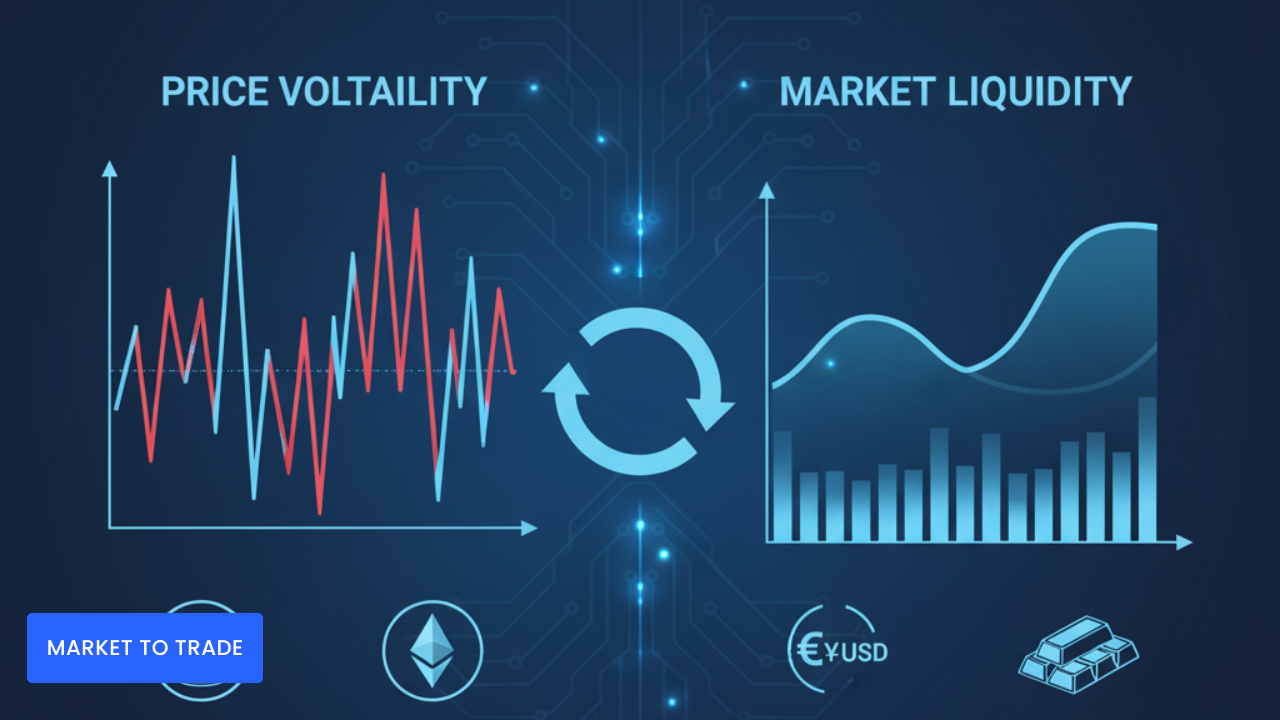Understanding Market Movement and Trade Flow
Every trader — beginner or professional — needs to understand two critical concepts that define every market: volatility and liquidity.
They determine how fast prices move and how easily trades can be executed.
At Holo Forex, we teach traders that success isn’t just about picking the right direction — it’s about knowing when and where to trade.
Let’s explore what volatility and liquidity mean, how they differ across Forex, stocks, commodities, and crypto, and how you can use them to your advantage.
1. What Is Volatility?
Volatility measures how much and how quickly prices move within a certain period.
In simple terms, it tells you how “active” or “bumpy” a market is.
How It Works
High volatility = large price swings (great for traders who like action).
Low volatility = stable prices (better for long-term or cautious traders).
Example:
If EUR/USD moves 100 pips in a day, it’s more volatile than if it only moves 30 pips.
Causes of Volatility
Economic announcements (e.g., interest rate decisions, NFP, CPI)
Political or geopolitical events
Market sentiment and risk appetite
Unexpected news or natural disasters
Liquidity drops (fewer traders = larger price gaps)
Pro Tip:
Volatility creates opportunity — but also risk. Always adjust position size and stops accordingly.
2. What Is Liquidity?
Liquidity refers to how easily an asset can be bought or sold without significantly changing its price.
How It Works
High liquidity = many buyers and sellers (fast execution, tight spreads).
Low liquidity = few participants (slippage, wider spreads).
Example:
The EUR/USD pair has high liquidity — it’s the most traded currency in the world.
In contrast, an exotic pair like USD/TRY has lower liquidity and higher spreads.
3. The Relationship Between Volatility and Liquidity
Liquidity and volatility are closely linked — but often move in opposite directions.
| Liquidity | Volatility | Typical Market Behavior |
|---|---|---|
| High | Low | Stable, tight spreads, fewer large swings |
| Low | High | Sharp moves, gaps, and unpredictable spikes |
Example:
During major holidays or after major news events, liquidity drops — but volatility often spikes.
4. Comparing Volatility and Liquidity Across Markets
Every market has its own rhythm — some are calm and steady, others fast and unpredictable.
Forex Market
Liquidity: Extremely high (over $7 trillion traded daily).
Volatility: Moderate to high during major sessions or news events.
Best For: Active traders seeking consistent opportunities.
Stock Market
Liquidity: High for blue-chip stocks; lower for small-cap stocks.
Volatility: Driven by earnings reports, news, and economic conditions.
Best For: Swing traders and investors watching fundamentals.
Commodities Market
Liquidity: Varies by asset (gold and oil are very liquid; others less so).
Volatility: Sensitive to supply-demand shifts and geopolitical events.
Best For: Traders who follow global economic and political trends.
Cryptocurrency Market
Liquidity: Depends on the coin — Bitcoin and Ethereum are most liquid.
Volatility: Extremely high; double-digit daily moves are common.
Best For: Experienced traders comfortable with risk and 24/7 markets.
5. Best Times to Trade Based on Liquidity and Volatility
Timing matters — especially in Forex and CFD trading.
Forex Sessions (in GMT)
| Session | Time | Characteristics |
|---|---|---|
| Tokyo | 00:00 – 09:00 | Lower volatility, good for yen pairs |
| London | 08:00 – 17:00 | High liquidity, most active market |
| New York | 13:00 – 22:00 | High volatility, overlaps with London |
| Sydney | 22:00 – 07:00 | Lower volume, sets early tone |
Pro Tip:
The London–New York overlap (13:00–17:00 GMT) is the most active time for trading — best liquidity, best movement.
6. How Traders Use Volatility and Liquidity
Understanding these two factors helps you choose trades that fit your personality and plan.
✅ Scalpers: Thrive in high-liquidity, high-volatility sessions (e.g., London).
✅ Swing Traders: Prefer moderate volatility and steady trends.
✅ Position Traders: Focus on long-term moves with lower volatility.
✅ Crypto Traders: Capitalize on extreme volatility — but with strict risk limits.
Example:
If the market is quiet, a range strategy works best.
If volatility spikes after news, breakout strategies are more effective.
7. Managing Risk During High Volatility
High volatility can magnify both profits and losses.
That’s why professional traders always adjust their risk per trade when markets get wild.
✅ Use smaller position sizes during volatile periods.
✅ Widen your stop-loss slightly to avoid premature exits.
✅ Avoid trading right before major announcements.
✅ Keep emotions in check — volatility often triggers overtrading.
Pro Tip:
When volatility is high, patience pays more than aggression.
Key Takeaways
✅ Volatility = How fast prices move; Liquidity = How easily you can trade.
✅ Forex is the most liquid market; crypto is the most volatile.
✅ High liquidity means tighter spreads and smoother execution.
✅ High volatility means opportunity — but also higher risk.
✅ Adjust your strategy, position size, and timing based on both factors.
Final Thoughts
Volatility and liquidity are the heartbeat of every market.
Knowing when markets are moving — and how easily they move — gives traders a serious advantage.
At Holo Forex, we help traders master market rhythm: when to step in, when to stay patient, and how to turn global movement into consistent opportunity.
Because when you understand volatility and liquidity, you don’t just trade — you trade smart.


